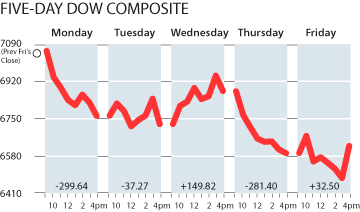Merck Outlines Long-Term Prospects and Progress on Strategic Plan at 2008 Annual Business Briefing
>Company Expects to File New Drug Applications With the FDA for Telcagepant, Rolofylline and Ezetimibe/Atorvastatin; Will Seek Approval of New Indications for GARDASIL and ISENTRESS in 2009
>Merck's Pipeline Continues to Progress with Six New Phase III Development Programs Anticipated to Start in 2009 and Seven Phase III Programs Continuing
>Merck Plans Three Phase III Programs for New Indications to Start in 2009 and Two Phase III Programs for New Indications Continuing in 2009
>JANUVIA, JANUMET and ISENTRESS Expected to Deliver Strong Growth as Worldwide Launches Continue
>Implementation of New Business Models Continue in U.S., Europe and Japan; Company Expanding Business in Emerging Markets
>Company Forms Merck BioVentures Division for Follow-on Biologics
Merck's Late-Stage Pipeline Advances
Peter S. Kim, Ph.D., executive vice president and president, Merck Research Laboratories, told analysts that in 2009, the Company anticipates submitting three New Drug Application (NDA) filings with the U.S. Food and Drug Administration (FDA): MK-0974, telcagepant, an investigational compound for the treatment of migraines; MK-7418, rolofylline, an investigational compound for the treatment of acute heart failure; and MK-0653C, ezetimibe combined with atorvastatin, an investigational medication for the treatment of dyslipidemia being developed by the Merck-Schering Plough joint venture.
The Company also anticipates regulatory action in 2009 on three supplemental filings that have been or will be submitted to the FDA and other regulatory agencies: two for GARDASIL, Merck's HPV vaccine, for an expanded indication for adult women through age 45 and for use in males; and one for ISENTRESS, a first-in-class integrase inhibitor for the treatment of HIV-1 infection, for an expanded indication for use in treatment-naïve patients. In the U.S. alone, if approved, the treatment-naïve indication would triple the number of patients for whom ISENTRESS would be indicated.
At the briefing, Dr. Kim profiled the Company's extensive and diverse research and development efforts that include 47 active clinical programs across the Company's major research franchises: bone, respiratory, immunology and endocrine; cardiovascular; diabetes and obesity; infectious diseases; neuroscience; oncology and vaccines.
Dr. Kim told analysts that as of Dec. 9, 2008, Merck's pipeline includes nine candidates in Phase III, 15 in Phase II and 23 in Phase I. And he detailed seven of the drug candidates currently in Phase III clinical development:
MK-7418, rolofylline, a potential first-in-class selective adenosine A1 antagonist, is a Phase III investigational drug being evaluated for the treatment of acute heart failure. An NDA filing with the FDA continues to be anticipated in 2009.
MK-0974, telcagepant, an investigational oral calcitonin gene-related peptide receptor antagonist, represents a new mechanism for the treatment of migraine and has demonstrated efficacy comparable to zolmitriptan, an effective triptan, in the Phase III clinical program. The Company continues to anticipate filing an NDA with the FDA in 2009.
MK-8669, deforolimus, is a novel mTor (mammalian target of rapamycin) inhibitor being evaluated for the treatment of cancer. The drug candidate is being jointly developed and commercialized with ARIAD Pharmaceuticals, Inc., under an agreement reached in 2007. A Phase III study (SUCCEED) in patients with metastatic soft-tissue or bone sarcomas is under way. The Company continues to anticipate filing an NDA with the FDA in 2010.
V503, a nine-valent HPV vaccine in development to provide broader coverage against HPV. The Phase III clinical program is underway and Merck anticipates a filing with the FDA in 2012.
MK-0822, odanacatib, is a highly selective inhibitor of the cathepsin K enzyme, which is being evaluated for the treatment of osteoporosis. The Phase III program is ongoing. Merck said that it continues to anticipate filing an NDA with the FDA in 2012.
MK-0524A is a drug candidate that combines extended-release niacin and a novel flushing inhibitor, laropiprant. MK-0524A has demonstrated the ability to lower LDL-cholesterol (LDL-C), raise HDL-cholesterol (HDL-C) and lower triglycerides with significantly less flushing than traditional extended release niacin alone. The cardiovascular outcomes trial, HPS2-THRIVE, is ongoing and expected to complete in 2012. Merck anticipates filing an NDA with the FDA for MK-0524A in 2012.
MK-0859, anacetrapib, is an inhibitor of the cholesteryl ester transfer protein (CETP) that has shown promise in lipid management by raising HDL-C and reducing LDL-C without raising blood pressure. A Phase III study was initiated in April 2008 and enrollment in a cardiovascular outcomes study is expected to begin in 2010. The Company anticipates filing an NDA with the FDA beyond 2014.
Additionally, Dr. Kim detailed the six potential 2009 Phase III candidates, notably:
V710, a novel Staphylococcus aureus (S. aureus) vaccine that targets a highly conserved antigen originally discovered by Intercell AG. A Phase II/III sequential design study in cardiothoracic surgery patients at acute risk of infection is underway and additional studies are under consideration. S. aureus infections are a major public health challenge and represent a serious unmet medical need. Merck anticipates a filing with the FDA in 2011.
MK-0633, a once-daily 5-Lipoxygenase (5-LO) inhibitor that has the potential to decrease the production of all leukotrienes, key mediators of inflammation. MK-0633 is currently being evaluated in a Phase IIb study for the treatment of asthma and a Phase IIa study for the treatment of chronic obstructive pulmonary disease (COPD). The Company anticipates filing MK-0633 for asthma in 2011.
Subscribe to:
Post Comments (Atom)



No comments:
Post a Comment